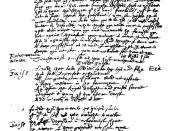The British Renaissance produced many types of literature for the world to see. Shakespeare, Spenser, and Marlowe all contributed to the shaping of the time period. Christopher Marlowe's 'The Passionate Shepherd to His Love' portrays one of the typical love poems that can be seen from the Renaissance. A man is in search of the love of another girl, or woman. Sir Walter Raleigh wrote a poem in response to this passage of Marlowe's entitled 'The Nymph's Reply to the Shepherd.' Although the name of the girl is not stated anywhere in the former poem, Raleigh decided to use a wood nymph as his subject. The Shepherd seems to be a meaningful man. His plead for the nymph's love seems true, but is hollow. The Nymph's reply frankly points this out to the Shepherd in her reply and jokingly refuses him her love. The themes of age, weather and the seasons, and materialism all appear in the two poems.
Though, both authors use them differently to show how love should be attained.
Love should be attained by use of the heart. This theory is the premise of Christopher Marlowe's 'The Passionate Shepherd to His Love.' The Shepherd in his poem offers the world to his Love and everything with it. He is an old man and hopes to win the girl's heart. Notice the word 'hopes.'
If these delights thy mind may move,
Then live with me and be my love.
And so the last two lines of the poem end. Putting these lines at the very end of the poem emphasizes the unsure gestures of the Shepherd. His age also brings up another very interesting view of Marlowe's. In the poem, Marlowe expresses the idea that age has no influence upon love and...


